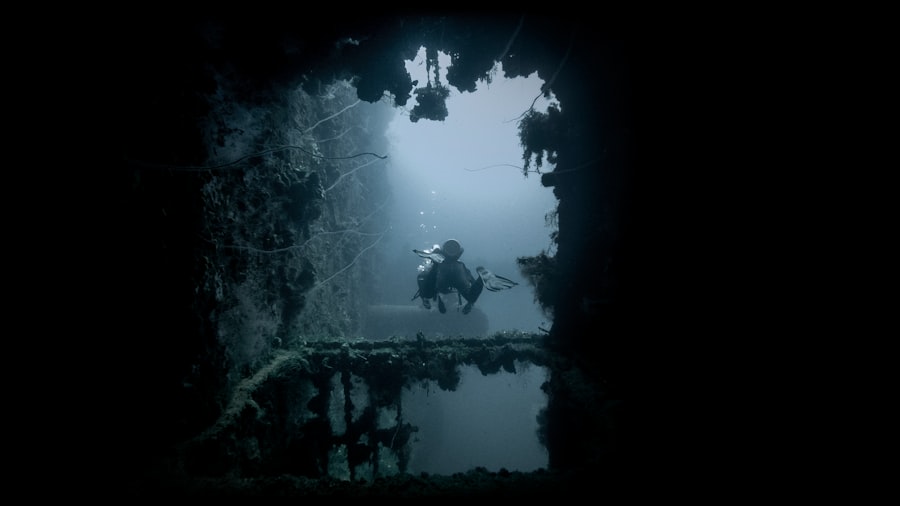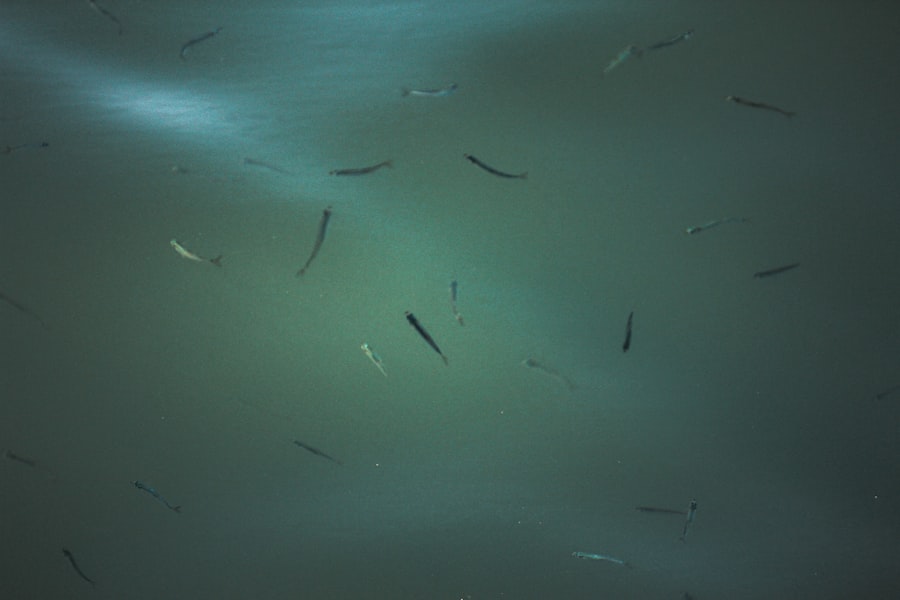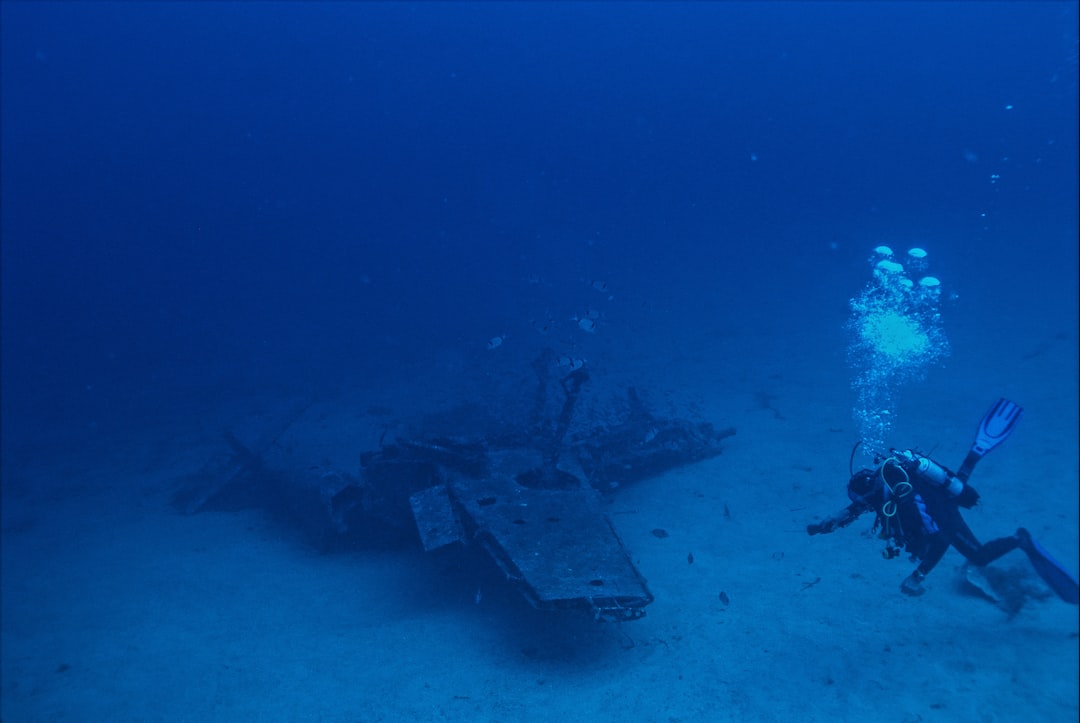The deep sea, often referred to as the final frontier of our planet, is a realm that remains largely unexplored and shrouded in mystery. Stretching from the continental shelf to the abyssal plains, this vast underwater expanse covers more than 60% of the Earth’s surface. As you delve into the depths of this aquatic world, you will discover an environment that is not only breathtakingly beautiful but also fraught with unseen dangers.
The deep sea is home to a myriad of unique ecosystems, teeming with life forms that have adapted to extreme conditions. However, beneath its alluring surface lies a host of threats that challenge both human exploration and the delicate balance of marine life. As you embark on a journey into the deep sea, you will encounter a landscape that is both alien and awe-inspiring.
From bioluminescent creatures illuminating the dark waters to towering underwater mountains and vast trenches, the deep sea is a treasure trove of wonders. Yet, it is essential to recognize that this enchanting world is not without its perils. The challenges posed by the deep sea are as diverse as its inhabitants, and understanding these dangers is crucial for anyone who seeks to explore or exploit this hidden domain.
Key Takeaways
- The deep sea is a mysterious and largely unexplored part of the ocean, with unique challenges and dangers.
- The extreme pressure in the deep sea can pose a serious threat to both human and mechanical exploration.
- Deep sea creatures, such as anglerfish and giant squid, have evolved to survive in the harsh conditions of the deep sea and can be dangerous to encounter.
- Deep sea mining activities can have detrimental effects on the marine environment and disrupt fragile ecosystems.
- Pollution in the deep sea can have long-lasting and devastating impacts on marine life and the overall health of the ocean.
Unseen Dangers: The Threat of Pressure
One of the most formidable challenges you will face in the deep sea is the immense pressure that increases with depth. As you descend into the ocean’s depths, the weight of the water above you becomes increasingly oppressive, reaching levels that can crush submarines and other submersibles. At depths of just a few thousand meters, the pressure can exceed 400 times that of atmospheric pressure at sea level.
This extreme environment poses significant risks to both human explorers and the technology designed to withstand it. To navigate these crushing depths, specialized equipment is essential. Submersibles must be engineered with materials that can endure such intense pressure, and even the slightest flaw can lead to catastrophic failure.
As you consider venturing into this abyss, it becomes clear that understanding the physics of pressure is paramount. The deep sea is not a forgiving place; it demands respect and caution from those who dare to explore its depths.
The Menace of Deep Sea Creatures

As you venture deeper into the ocean, you will encounter an array of bizarre and often terrifying creatures that inhabit this dark world. Many of these organisms have evolved unique adaptations to survive in extreme conditions, making them both fascinating and formidable. From giant squids with their long tentacles to anglerfish with bioluminescent lures, the deep sea is home to predators that are perfectly adapted to their environment.
However, these creatures also pose a threat to human exploration. The deep sea is not just a habitat for strange life forms; it is also a battleground where survival of the fittest reigns supreme. As you navigate through this underwater realm, you may find yourself at risk from predatory species that have developed lethal hunting techniques.
Encounters with these creatures can be both exhilarating and dangerous, reminding you that in this alien world, you are not at the top of the food chain.
The Perils of Deep Sea Mining
| Perils of Deep Sea Mining | Impact |
|---|---|
| Loss of Biodiversity | Disruption of deep sea ecosystems and extinction of unique species |
| Ocean Pollution | Release of toxic substances and heavy metals into the ocean |
| Seabed Destruction | Alteration of seafloor topography and habitats |
| Climate Change | Release of carbon stored in deep sea sediments |
In recent years, the allure of untapped resources in the deep sea has led to an increase in mining activities. As you consider the potential benefits of extracting minerals and metals from the ocean floor, it is crucial to weigh these advantages against the environmental consequences. Deep sea mining poses significant risks to fragile ecosystems that have taken millennia to develop.
The disruption caused by mining operations can lead to habitat destruction and loss of biodiversity. Moreover, as you explore the implications of deep sea mining, you will discover that the technology used for extraction can also introduce pollutants into the water column. Sediment plumes generated during mining can smother marine life and disrupt food chains.
The potential for irreversible damage to these ecosystems raises ethical questions about our responsibility to protect the ocean’s depths while pursuing economic gain.
The Environmental Impact of Deep Sea Pollution
Pollution in the deep sea is an insidious threat that often goes unnoticed by those on land. As you delve into this issue, you will find that contaminants such as plastics, heavy metals, and chemicals are making their way into these remote waters. The consequences of deep sea pollution are far-reaching, affecting not only marine life but also human health through the food chain.
As you consider the sources of this pollution, it becomes evident that human activities on land have a direct impact on the health of ocean ecosystems. Runoff from agriculture, industrial waste, and plastic debris all contribute to the degradation of deep sea environments. The challenge lies in addressing these issues before they escalate further, as many species in these depths are already vulnerable due to their specialized habitats.
The Risk of Underwater Volcanic Activity

The deep sea is also home to underwater volcanoes and hydrothermal vents that can pose significant risks to both marine life and human exploration efforts. As you explore these geological features, you will learn about their role in shaping ocean ecosystems and their potential for catastrophic eruptions. Underwater volcanic activity can lead to sudden changes in water temperature and chemistry, which can have devastating effects on local marine populations.
The unpredictability of underwater volcanoes adds another layer of danger for those venturing into the deep sea. Eruptions can occur without warning, releasing toxic gases and ash that can disrupt entire ecosystems. As you contemplate your journey into these depths, it is essential to remain aware of the geological forces at play beneath the surface.
The Hazards of Deep Sea Exploration
Exploring the deep sea is an endeavor fraught with challenges and hazards.
The isolation and darkness of the deep ocean can lead to feelings of claustrophobia and anxiety, making mental resilience just as important as physical preparedness.
Moreover, technical failures can occur at any moment during your exploration. Equipment malfunctions or communication breakdowns can leave you stranded in an inhospitable environment with limited resources. Understanding these risks and preparing for contingencies is vital for anyone considering a journey into this uncharted territory.
The Danger of Deep Sea Navigation
Navigating through the vastness of the deep sea presents its own set of challenges. As you traverse these waters, you will encounter unpredictable currents and shifting underwater topography that can complicate your journey. Traditional navigation methods may prove ineffective in such an alien environment, necessitating advanced technology and expertise.
Additionally, visibility in the deep sea is often severely limited due to darkness and sedimentation. This lack of visibility can lead to disorientation and increase the risk of accidents or collisions with underwater structures or marine life. As you plan your navigation strategy, it becomes clear that thorough preparation and knowledge of oceanographic conditions are essential for safe passage.
The Threat of Deep Sea Natural Disasters
Natural disasters such as tsunamis and earthquakes pose significant threats not only to coastal communities but also to those exploring or operating in deep sea environments. As you consider these risks, it becomes apparent that seismic activity can trigger massive waves capable of devastating entire regions. Understanding tectonic plate movements and their potential consequences is crucial for anyone involved in deep sea activities.
Moreover, tsunamis generated by underwater earthquakes can travel across vast distances at incredible speeds, making early warning systems essential for mitigating their impact. As you reflect on these natural disasters, it becomes clear that preparedness and awareness are key components in navigating the unpredictable nature of the deep sea.
The Unknown Risks of Deep Sea Climate Change
Climate change poses a myriad of risks to ocean ecosystems, many of which remain poorly understood due to limited research in deep-sea environments. As temperatures rise and ocean acidity increases, you may witness shifts in species distribution and changes in food webs that could have far-reaching consequences for marine life. These alterations may also impact human communities reliant on healthy oceans for their livelihoods.
As you explore this complex issue further, it becomes evident that climate change is not just a surface-level concern; its effects penetrate deep into oceanic ecosystems. Understanding how these changes manifest in the depths will be crucial for developing effective conservation strategies and ensuring the resilience of marine life in an era of rapid environmental change.
Navigating the Unseen Dangers of the Deep Sea
In conclusion, your journey into the deep sea reveals a world filled with both wonder and peril. From the crushing pressure that threatens your very existence to the menacing creatures lurking in the shadows, every aspect of this environment demands respect and caution. As you navigate through these unseen dangers—whether they be environmental threats like pollution or geological hazards like underwater volcanoes—you must remain vigilant and informed.
The allure of exploration should never overshadow your responsibility to protect this fragile ecosystem from human impact. By understanding the risks associated with deep-sea activities and advocating for sustainable practices, you can contribute to preserving this mysterious realm for future generations. Ultimately, navigating the unseen dangers of the deep sea requires a delicate balance between curiosity and caution—a balance that will shape our relationship with one of Earth’s final frontiers.
The deep sea is a mysterious and largely unexplored frontier, teeming with unseen threats that challenge our understanding of marine ecosystems. These threats range from undiscovered species with potentially harmful characteristics to environmental changes that could disrupt the delicate balance of life in these dark depths. An intriguing article that delves into these hidden dangers is available on Freaky Science. It explores the various unknowns lurking beneath the ocean’s surface and the implications they may have on both marine life and human activities. For more insights, you can read the full article by visiting Freaky Science.
WATCH THIS! Meet the Ocean Virus Rewiring Your Brain — New Science Reveals Its Shocking Influence
FAQs
What are some examples of unseen threats in the deep sea?
Some examples of unseen threats in the deep sea include pollution from human activities, such as oil spills and plastic waste, as well as the impacts of climate change, such as ocean acidification and rising sea temperatures.
How do these unseen threats impact the deep sea ecosystem?
Unseen threats in the deep sea can impact the ecosystem by disrupting food chains, damaging habitats, and causing harm to marine species. For example, pollution can lead to the accumulation of toxins in deep sea organisms, while ocean acidification can affect the ability of marine organisms to build their shells and skeletons.
What are the potential long-term consequences of these unseen threats?
The potential long-term consequences of unseen threats in the deep sea include the loss of biodiversity, the degradation of deep sea habitats, and the disruption of important ecological processes. These consequences can have far-reaching impacts on the health of the entire ocean ecosystem.
How can we address these unseen threats in the deep sea?
Addressing unseen threats in the deep sea requires a combination of measures, including reducing pollution from land-based sources, implementing sustainable fishing practices, and mitigating the impacts of climate change. It also involves increasing our understanding of deep sea ecosystems and promoting conservation efforts to protect these vulnerable environments.
